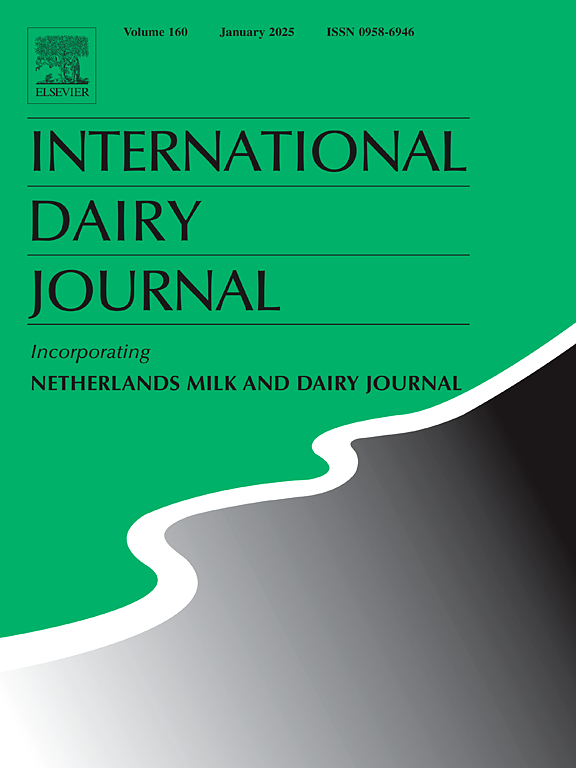牛奶加工单元操作过程中牛奶微生物群和孢子含量的变化
IF 3.1
3区 农林科学
Q2 FOOD SCIENCE & TECHNOLOGY
引用次数: 0
摘要
本研究旨在探讨牛奶微生物群(包括厌氧孢子)的水平和组成如何受到牛奶加工过程中常用的单个单元操作的影响。样品经过不同的处理阶段,从原料奶到微滤奶和巴氏杀菌奶。在培养过程中进行了依赖和独立分析,以跟踪微生物群和厌氧孢子含量的变化。在我们的研究中,我们观察到原料奶最初的微生物质量会影响最终的细菌含量,影响每个加工阶段的微生物群。分离和微滤以及巴氏灭菌被认为对牛奶微生物群的组成和孢子的减少影响最大,但在微滤过程中,一些细菌和孢子能够通过膜。此外,在分离阶段检测到细菌污染和标准化牛奶中由于环境污染而存在孢子。本文章由计算机程序翻译,如有差异,请以英文原文为准。
Changes in milk microbiota and spore content during milk processing unit operations
This research aims to investigate how the level and composition of milk microbiota, including anaerobic spores, are influenced by individual unit operations commonly used during milk processing. Samples were collected after different processing stages, from raw milk to microfiltrated, and pasteurized milk. Culture-dependent and -independent analyses were performed to follow the microbiota and anaerobic spore content changes along the process. In our study, we observed that the initial microbiological quality of raw milk impacted the final bacterial content, influencing the microbiota at each stage of processing. Separation and microfiltration, together with pasteurization, were identified as having the greatest impact on the composition of the milk microbiota and spore reduction, but during the microfiltration process, some bacteria and spores were able to pass the membrane. Furthermore, bacterial contamination at the separation stage and the presence of spores in the standardized milk due to environmental contamination were detected.
求助全文
通过发布文献求助,成功后即可免费获取论文全文。
去求助
来源期刊

International Dairy Journal
工程技术-食品科技
CiteScore
6.50
自引率
9.70%
发文量
200
审稿时长
49 days
期刊介绍:
The International Dairy Journal publishes significant advancements in dairy science and technology in the form of research articles and critical reviews that are of relevance to the broader international dairy community. Within this scope, research on the science and technology of milk and dairy products and the nutritional and health aspects of dairy foods are included; the journal pays particular attention to applied research and its interface with the dairy industry.
The journal''s coverage includes the following, where directly applicable to dairy science and technology:
• Chemistry and physico-chemical properties of milk constituents
• Microbiology, food safety, enzymology, biotechnology
• Processing and engineering
• Emulsion science, food structure, and texture
• Raw material quality and effect on relevant products
• Flavour and off-flavour development
• Technological functionality and applications of dairy ingredients
• Sensory and consumer sciences
• Nutrition and substantiation of human health implications of milk components or dairy products
International Dairy Journal does not publish papers related to milk production, animal health and other aspects of on-farm milk production unless there is a clear relationship to dairy technology, human health or final product quality.
 求助内容:
求助内容: 应助结果提醒方式:
应助结果提醒方式:


